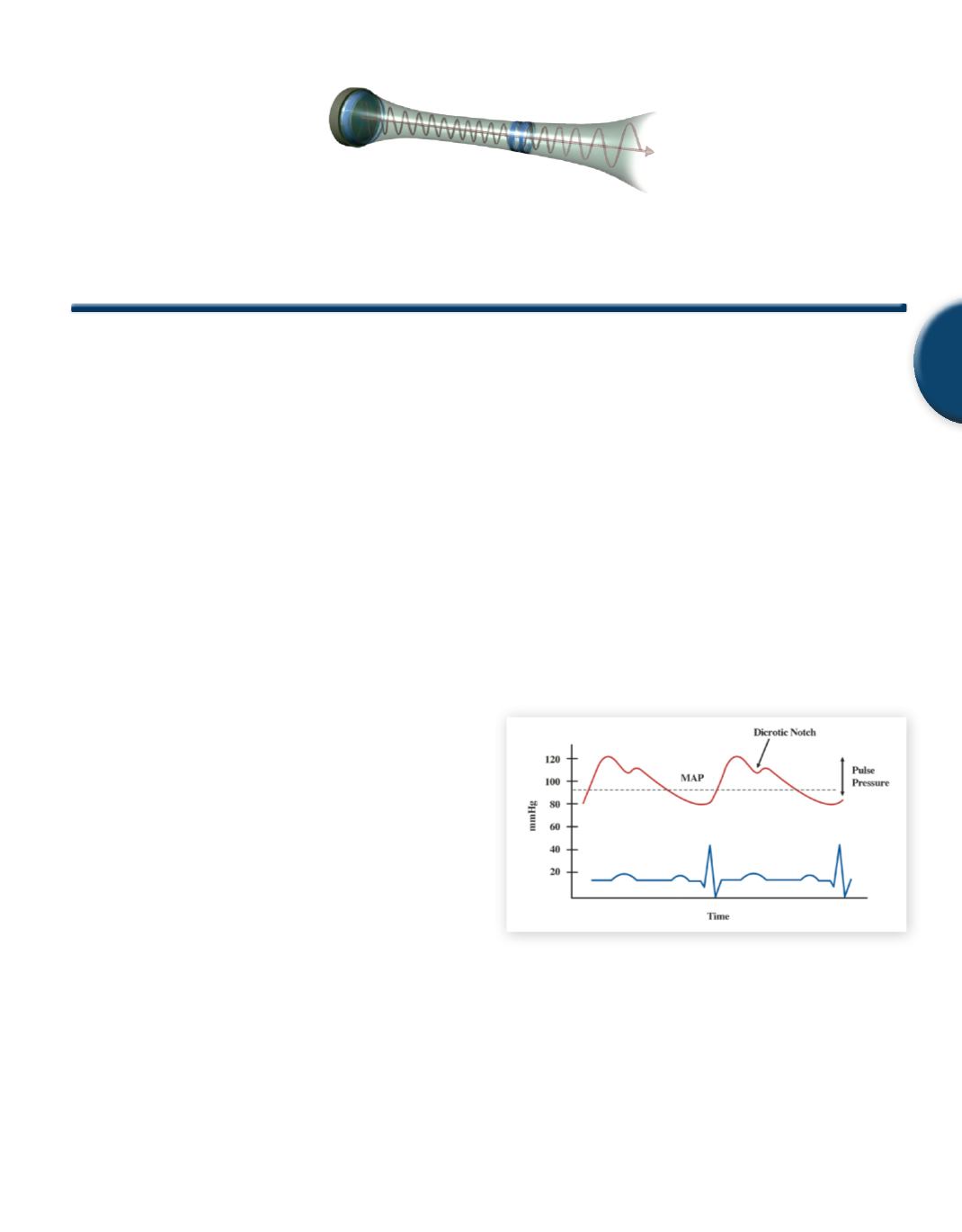
Chapter 13: Hemodynamics
403
13
Introduction
The simplifications andassumptionsmade toderivebasicfluiddynamic
equations require re-examining before application in the much more
complex situation of blood flow in a patient. In Chapter 12, Fluid
Dynamics, major assumptions were made either explicitly or im-
plicitly which clearly do not hold for blood flow. A few of the most
obvious differences fromour simplifiedmodel are: multiple branch-
ing vessels in parallel and series combinations, pulsatile flow, elastic
vessels, and a viscous fluid. As a result of these new complexities
not addressed by our fluidmodel,the equations developed can serve
only as a foundation for interpreting the cardiovascular system,
but by themselves will not always adequately describe the specific
behaviors of hemodynamics.
The starting point must therefore be to re-familiarize ourselves with
the main components of the cardiovascular system,making certain
to understand the principal function of each systemcomponent. The
next step will be to address each simplification made in Chapter 12
and determine the effect of these complexities with respect to each
system component (subsystem). Once we understand how each
subsystem of the cardiovascular system is working, we can then
integrate our knowledge of each subsystem to develop a compre-
hensive understanding of the healthy cardiovascular system at rest,
as one closed system.
Once an intuitive understanding of a healthy system has been
developed, the complexities of exercise and compensatory changes
will be introduced. Further complexities will then be intro-
duced by comparing a compromised (diseased) system at rest
and a compromised system under exercise. Finally, the state of
significant disease will be discussedwith respect to the fluid dynamic
equations.
The latter part of the chapter is devoted to how spectral Doppler is
used to assess these hemodynamic parameters. This approach forces
some repetition of material, but leads to a more intuitive and thor-
ough understanding by discussing the practical aspects of Doppler
assessment of hemodynamic parameters after learning about them.
1. Removing Some of the Simplifications
While developing the equations for fluid dynamics we made a series
of assumptions and simplifications, which most certainly are not
true in the case of blood flow in a live patient. We must analyze
each of these assumptions to determine when our equations will be
adequate for predicting flow conditions, and when we must realize
that our equations will be far from predictive.
1.1 The Assumption: Steady State Flow
The driving pressure for blood flow is highly pulsatile. The normal
pulse pressure waveform in the aorta has a rapid acceleration, a
gradual decrease to the dicrotic notch, a slight increase in pressure
as the aortic valve closes, and then a gradual decline throughout
diastole (discussed in the online 5e Extras). Clearly, this driving
pressure waveform is far removed from our assumption in the last
chapter in which we assumed steady state flow.
Fig. 1
EKG and pressure waveform
The fact that the pressure is dynamic introduces a plethora of
changes which affect flow. The most obvious effect of pulsatile
flow is a flow velocity which varies significantly during the cardiac
cycle. Understanding how the velocity varies is critical since it is the
principal parameter measured by Doppler that we use to interpret
changes in hemodynamics. In addition to this time variant velocity
signal,the other resulting changes with pulsatility are contingent on
the interaction of many parameters,including the cardiac output,the
pulse pressure,the mean arterial pressure,the peripheral resistance,
Hemodynamics
Chapter 13


